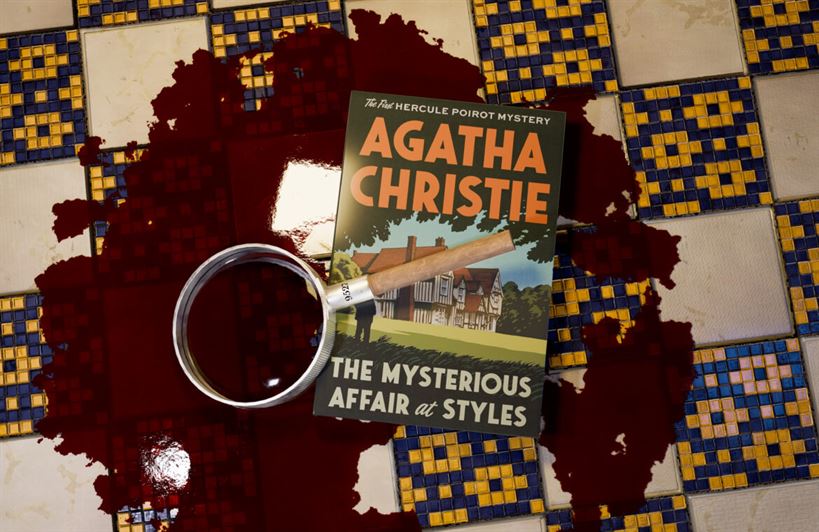In the chilling months of fall and upcoming winter, some may argue this is the best time to read a mystery book. And by some, I mean myself. “The Mysterious Affair at Styles” is one of Agatha Christie’s lesser-known novels. But that does not mean it is any less intriguing. Readers meet Poirot the detective featured in famous works like “Death on the Nile” and “Murder on the Orient Express.”
Now, let us jump into another haunting tale from Ms. Christie’s catalogue.
Meet Hastings, our narrator. He is a watchful eye as he visits his old friend John Cavendish at his old family estate in Styles. This story is set in England during the raging Great War (World War I) and many soldiers are off fighting on the front lines.
There is some fighting happening within the walls of the estate as well. Emily Inglethorp has just married a mysterious Alfred Inglethorp (a man who seems to have appeared out of thin air). Let us just say the other members of the estate are not his biggest fans. All seems well until a seemingly normal night in July when Mrs. Inglethorp dies under unknown circumstances.
Who killed Mrs. Inglethorp? I will not be the one to tell you. However, I will share the list of possible suspects.
Hastings, our narrator, seems anxious to explore the case, and he asks Poirot a famous private detective for help. There is John and Lawrence Cavendish, the stepsons of Mrs. Inglethorp and heirs to the inheritance. Next is Mary Cavendish, John’s wife, who is always seen talking to a mysterious Dr. Bauerstein who seems to come and go off Styles whenever he pleases. There is also Cynthia, a family friend and nurse who was at the scene the night of the murder. And many more housekeepers lurking about.
As for the mystery and the way the story is told, it is definitely a unique choice to have the narrator be a side character. I would argue he is almost irrelevant to the larger story. He serves as a fly on the wall listening and attempting to help Poirot solve the case. The story progresses when his personal bias gets in the way of possible discoveries. This works especially because it keeps Poirot as a distant ‘all-knowing’ figure. Hastings and the audience alike do not really understand him until the very end.
I really enjoyed that element of the book, and I think this perspective was a nice change as opposed to the detective themself narrating the book. I also loved the characters in this book. They are all unique in their own way of processing Mrs. Ingelthorp’s death. It shows themes of greed and selfishness as true colors shine when the story progresses.
I do not want to say that there are elements that don’t work in this novel because it gets the job done. I will say as a reader there were moments I was frustrated and felt that it moved a little slow. The murder itself is not extremely elaborate, unlike other mystery books and stories. There also is not a lot of action and a majority of the book is discussion about the murder. There is a lot of technicalities in this book as well with the police and court (while Poirot is investigating privately). If you enjoy that aspect, this book is perfect, if not there are others that do not have it as much.
In comparison to another one of her books that I have read and reviewed, “And Then There Were None,” one is not better than the other. They have different elements that could appeal to different readers. I enjoyed “The Mysterious Affair at Styles” more because I love a good detective story. However, if you want a closed mystery, dinner party vibes and more action, I would recommend the latter. I will say that one amazing thing about Christie is the plethora of options!
I would recommend this book to anyone looking for a good mystery. More so the people who want to get into her work and don’t know where to start. To be honest, I read this book in preparation for “Murder on the Orient Express.” I am glad that I did! This book is a standalone so while I read it as a prequel it can be read on its own.
Overall, “The Mysterious Affair at Styles” is compelling and teaches truth about character and justice, as well as a fun detective story. Will you give it a read and find out what really happened that summer night in the quaint village of Styles?
Will you find out who really killed Emily Inglethorp?



